Read this post on TravelFeed.io for the best experience
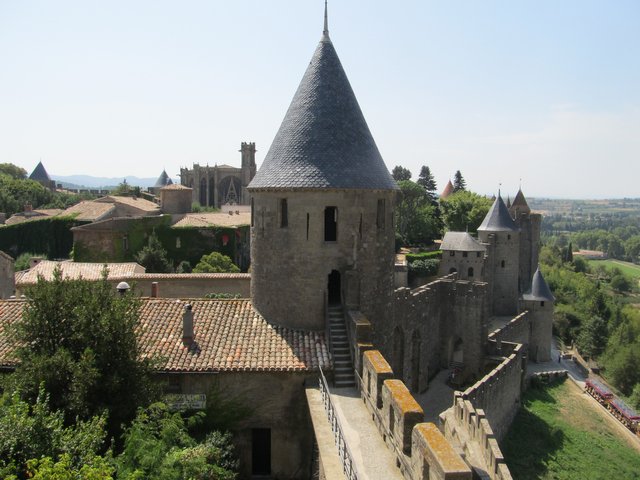
Hey, guys,
Today we're going to talk about another trip we took in France: To the Cite de Carcasssonne. The Cité de Carcassonne is a medieval fortress town, situated on a hill in the old town of Carcassonne in the region of Occitania (maybe you remember my last mail, in this region was also the monastery I told you about) in the south of France.
The fortress city is located on the right bank of the river Aude and in the southeast of the present city. It originated in Gallo-Roman times, in the Middle Ages it was built up to a fortress. The Cite de Carcassone is surrounded by a massive double wall. The wall itself is about three kilometres long and has a total of 52 towers. The main buildings inside the still inhabited Cité are a castle (Château comtal) and a church (Basilique Saint-Nazaire). The Festuing is the most impressive one that I have seen so far. It is also still very well preserved, as you can see on the photos: In the 19th century the already decaying Cité of Carcassonne was restored. This resulted in a well preserved, extensive historical monument. Since 1997 it is even a world cultural heritage site.
Carcassonne was founded as Carcasso by the Romans in the 1st century B.C. on the site of the present Cité. The towers with a horseshoe-shaped ground plan in the inner wall were typical of the Gallo-Roman period. As I have already told you how long the walls were, you can imagine the size of the area on which the fortress was built: Fourteen acres of it. In the Middle Ages, 3,000 to 4,000 people could live here. I don't know about you, but for me it would be a strange feeling to live in such a fortress, which is also a bit above and therefore isolated from the other inhabitants in the area. Everyone else works for tourism and lives outside. The Cité is an extensive open-air museum used by tourists and normally not accessible for cars.
Briefly a little bit about the history of the fortress: In the 13th century, the fortress city accommodated the central administration of the Inquisition in southern France. It was also a centre of the heterodox ("heretical") Cathar movement. Together with Toulouse, it was one of the most important cities in the historic region of Occitania.
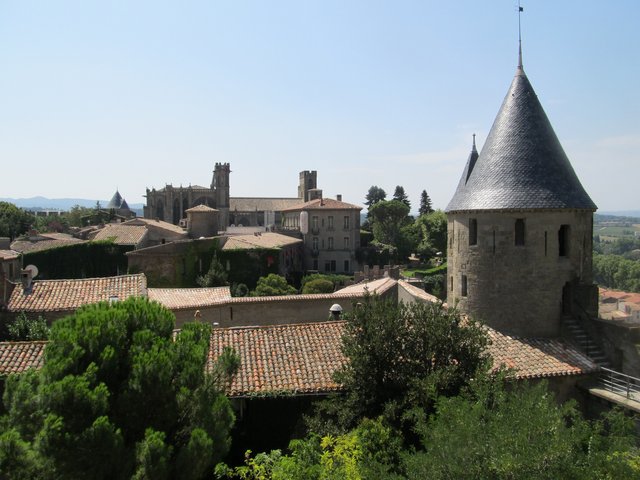


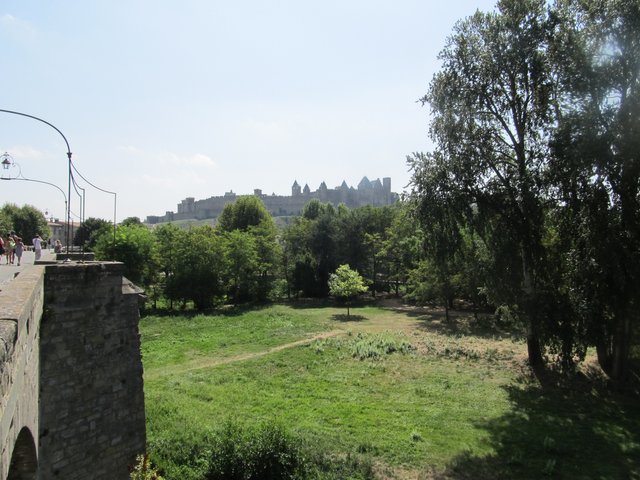
A very historical defence wall
Very interesting too: The walls of the Cité date from several construction periods and thus have different "architectural styles", if you can call it that ;) The oldest parts of the walls were built during the Visigothic period. They can be recognized by the layers of small, cubic stones, interrupted by layers of bricks. The narrowness of the towers is also characteristic. But they are already equipped with real windows. In the 12th century it was mainly the castle that was built. The outer ring of walls with its smooth ashlars dates from the middle of the 13th century. The smooth ashlars were one of the most beautiful things about the castle.
The towers have several storeys and are provided with loopholes, through which you also have a great view of the surrounding area. The building material for the two concentric fortification belts was brought in from the surrounding quarries: hard sandstone, difficult to remove and work, but which over the centuries began to erode under the influence of the violent storms in the southwest.
The inside of the walls is made up of pebbles, stone splinters and sand, connected by lime, which also serves as mortar. Very interesting: the nature of the masonry varies with the different periods of construction.
The outer wall was built after 1230 in 15 years, hence its uniform appearance. The construction history of the inner wall, on the other hand, is much more complex. Its masonry is also anything but uniform. At that time, the city already had a city wall from Gallo-Roman times that was about 1,000 years old, but it was no longer up to date. Today, it forms the "skeleton" of the inner belt and is often visible in the lower part of the present wall.
The moat around the wall was not filled with water. Instead, it had the function of preventing the use of larger siege equipment. The fortification of the city with a double curtain wall corresponded to a new defence tactic at the time, which had been designed around 1200 in the area. Its principle was: the defence must be active, it must be able to inflict heavy losses on the attacker. More than a thousand archers were therefore posted on the battlements. The towers flanked the entire wall without leaving a blind spot. It is the multitude of towers that makes the wall and the fortress itself so beautiful. Many of the towers of the outer line are so called shell towers, that means they are open at the back. This meant that the enemy could not find refuge once they had overcome the first wall. He could still be attacked from the inner wall by the archers. So much for the function of the towers and the defense strategies ;)
A few tips and information for sightseeing
A large part of the Cité Médiévale is accessible around the clock via the city gates Porte Narbonnaise and Porte d'Aude and can be visited free of charge.
And there is more to visit than just the fortress walls: within the double ring of walls, narrow alleys, craftsmen, restaurants and cafés invite you to explore. But it is really hard to discover everything at the fortification in one day, then one has to get there early in the morning, otherwise one will not make it in time. And last but not least the castle of the counts of Trencavel, built in the 12th century, and the architecturally impressive basilica Saint-Nazaire are incredibly recommendable to visit.
Which you should definitely see:
There is the tour of the Gallo-Roman city wall (this takes about 20 minutes) and the tour of the medieval west (30 minutes). On this "promenade", which stretches from the "cour du midi" to the Basilica of Saint-Nazaire, you can learn a lot about the medieval history of this fortification. Definitely a big plus: along the way there is a breathtaking view of the Basilica Saint-Nazaire, the city of Carcassonne and the Pyrenees - what more could you ask for?
But as I said, you should bring enough time with you. For in addition to the Cité on the hill, the lower town, built since the 13th century and located directly on the Canal du Midi, as well as the surrounding villages and the extensive landscape are well worth seeing and experiencing.
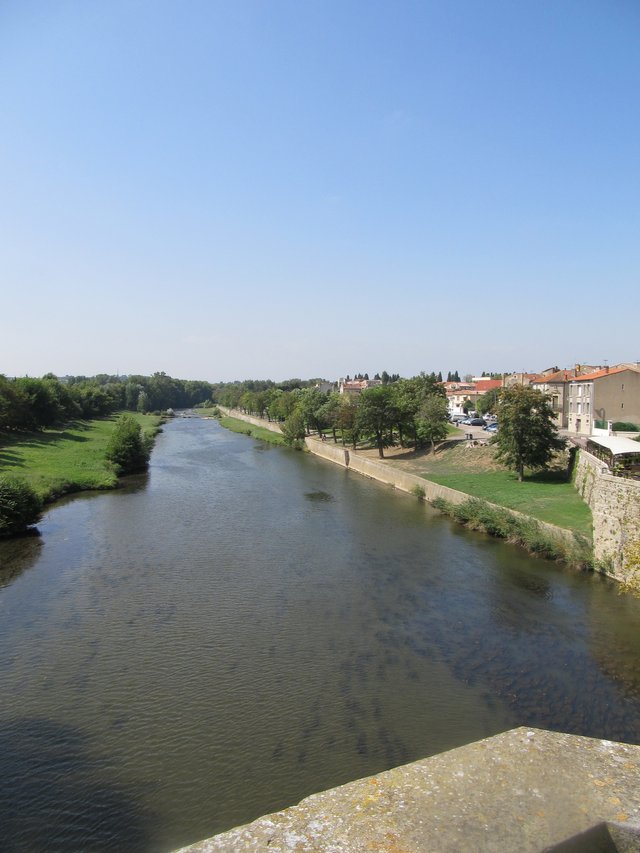
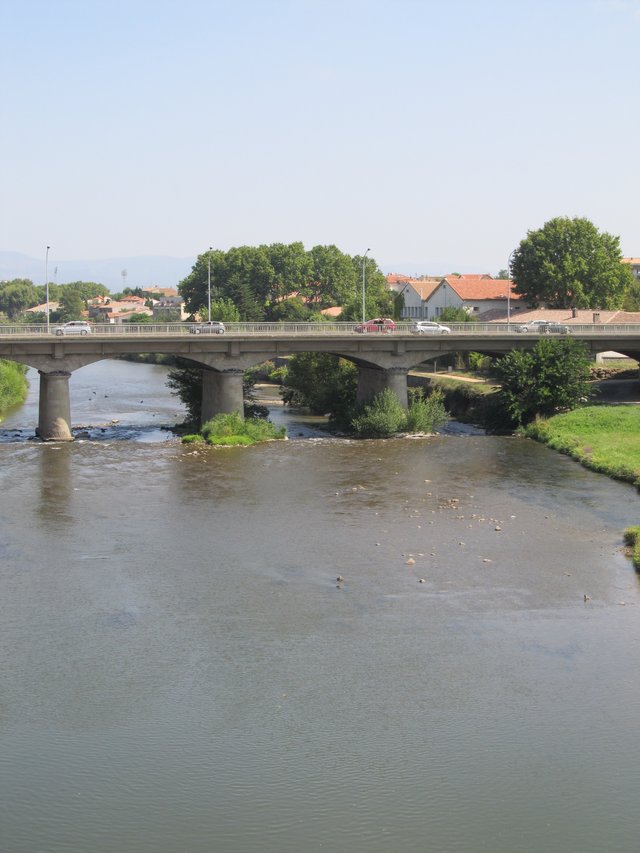
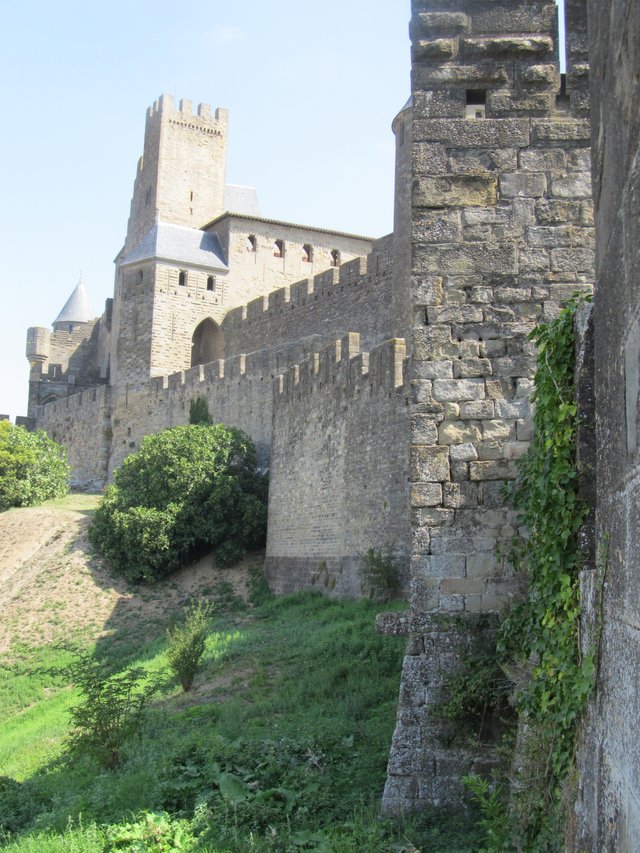
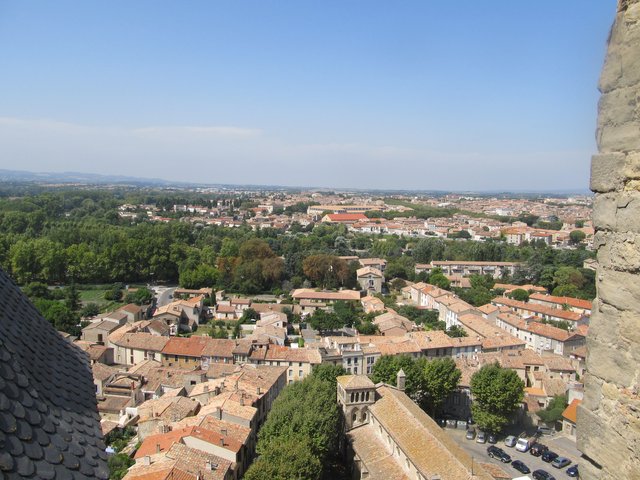
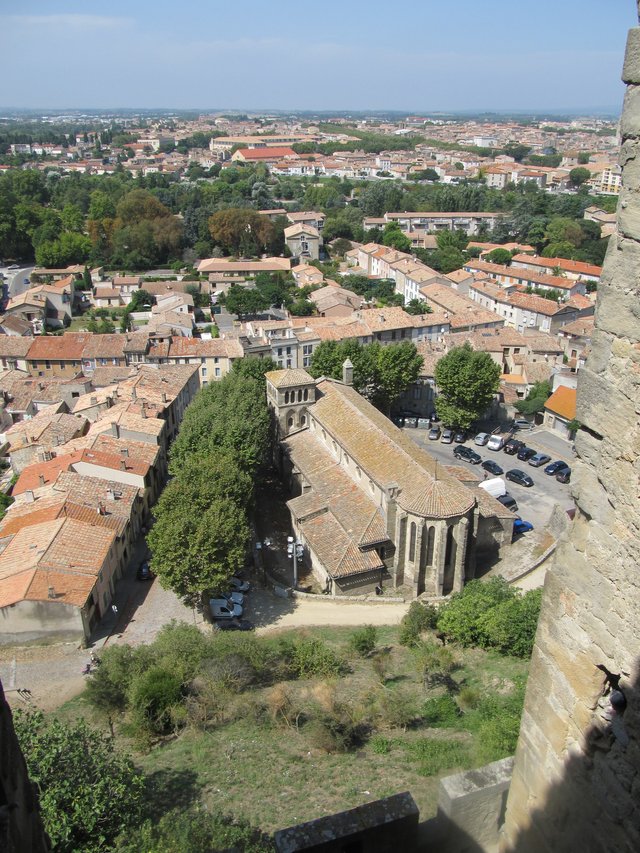
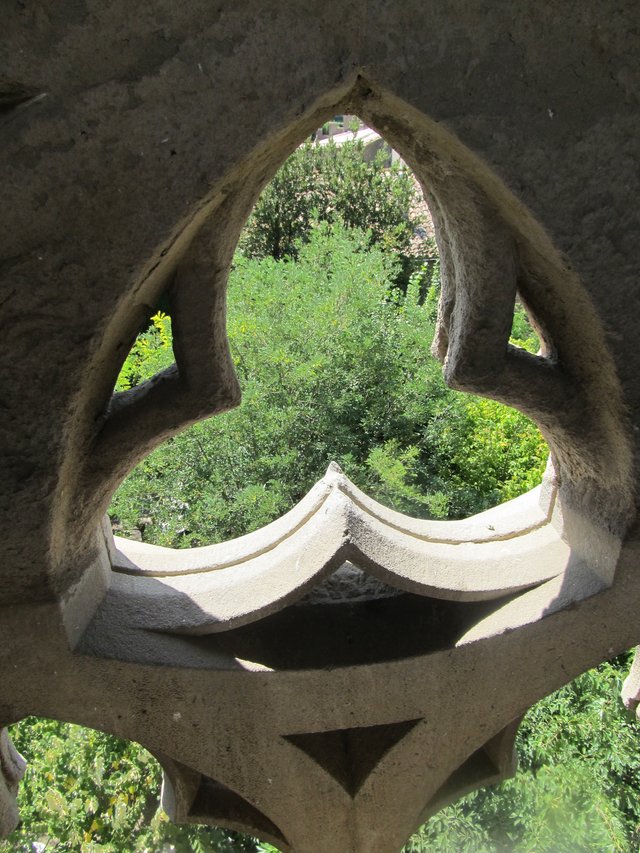
The historic old town as well as the ramparts, the kennel, the place of communication and defence between the two enclosures and the Basilica of Saint-Nazaire are accessible free of charge all year round. A visit in the evening hours is particularly worthwhile when the historic walls are illuminated. Guided tours with the "Petit Train" and carriage are also possible, but we did not do that (I think you have to book in advance ;) .
The castle and fortifications can only be visited at certain times and there is a charge for this.
Maybe interesting for some of you: At the cash desk you can buy audio-guides, which lead you with stories and information through the castle and the fortifications. The audio guides are available in German, French, Italian and Spanish.
By car, the best way to get to the Cite from Toulouse or Narbonne is via the A 61 motorway. Exit at Carcassonne Ouest or Est. Or via the national road RN 113. The historic old town is car-free. There are many paid parking lots within walking distance.
I hope you liked the Post and the information about the fortress and you are in some of it as interested as I am!
Congratulations @katrin-lux! You received the biggest smile and some love from TravelFeed! Keep up the amazing blog. 😍 Your post was also chosen as top pick of the day and is now featured on the TravelFeed.io front page.
Thanks for using TravelFeed!
@elsaenroute (TravelFeed team)
PS: TravelFeed is in social media to reach out more people, follow us on Facebook, Instagram, and Twitter.
Downvoting a post can decrease pending rewards and make it less visible. Common reasons:
Submit